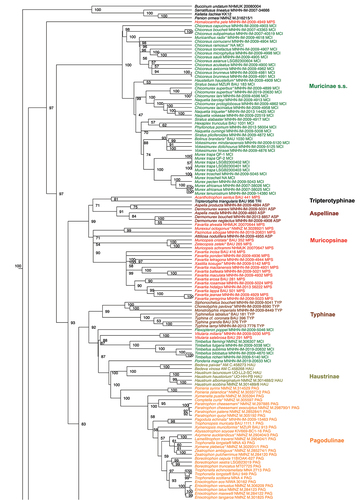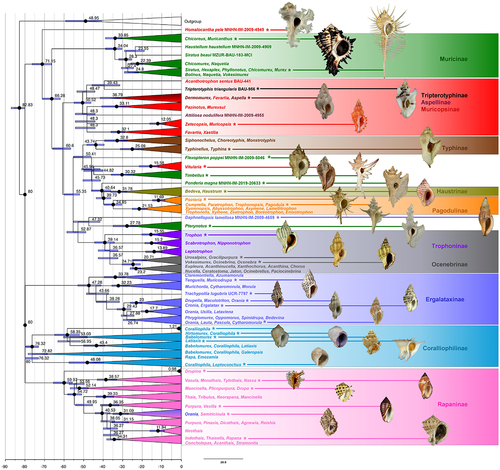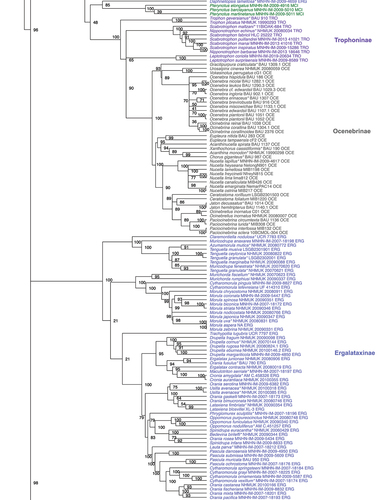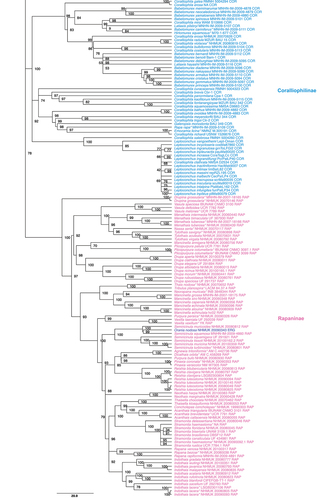Figures & data
Table I. Date intervals (95% confidence range in mya) obtained from least-squares ML analyses (by IQTree) for selected major nodes, along with fossil records used as calibration points. *based on Douglas et al. (Citation2014); samples from Seymour Island suggested to be older (45.8–58.4 mya) based on Montes et al. (Citation2019).
Figure 1. Maximum Likelihood phylogenetic reconstruction of the family Muricidae using IQTree. Values at nodes indicate ultrafast bootstrap support. Three letters at the end of each specimen’s label along with colours (as in ) indicate the current subfamily assignation. Type species are indicated with an * at the end of the name.

Figure 2. Maximum Likelihood time calibrated phylogenetic reconstruction of the family Muricidae using IQTree. Black dots at nodes indicate ultrafast bootstrap support values ≥ 0.95. Bars at nodes indicate 95% confidence intervals of ages expressed in mya. Branches are largely collapsed (fully uncollapsed tree in Supplementary Material Figure S5). Colours of collapsed clades, taxon names, and figure-connecting lines indicate the traditional subfamilial classification of the taxa represented in the relevant lineage (as also indicated in the subfamily labelling). Shells, not to scale, of representative taxa (indicated by an asterisk), from top/left: Homalocantha pele; Muricanthus radix; Murex pecten; Tripterotyphis fayae; Aspella producta; Muricopsis cristata; typhina coronata; Flexopteron poppei; Vitularia miliaris; Timbellus richeri; Ponderia magna; Haustrum lacunosum; Poirieria zelandica; Pagodula echinata; Daphnellopsis lamellosa; Pterynotus elongatus; Trophon geversianum; Gracilipurpura craticulata; Ocenebra hispidula; Muricodrupa fenestrata; Trachypollia lugubris; Orania fusulus; Ergalatax junionae; Cytharomorula vexillum; Coralliophila galea; Coralliophila violacea; Babelomurex cariniferus; Latiaxis pilsbryi; Leptoconchus peroni; Drupina grossularia; Nassa serta; Drupa ricinus; Vexilla vexillum; Semiricinula muricoides; Rapana bezoar.



